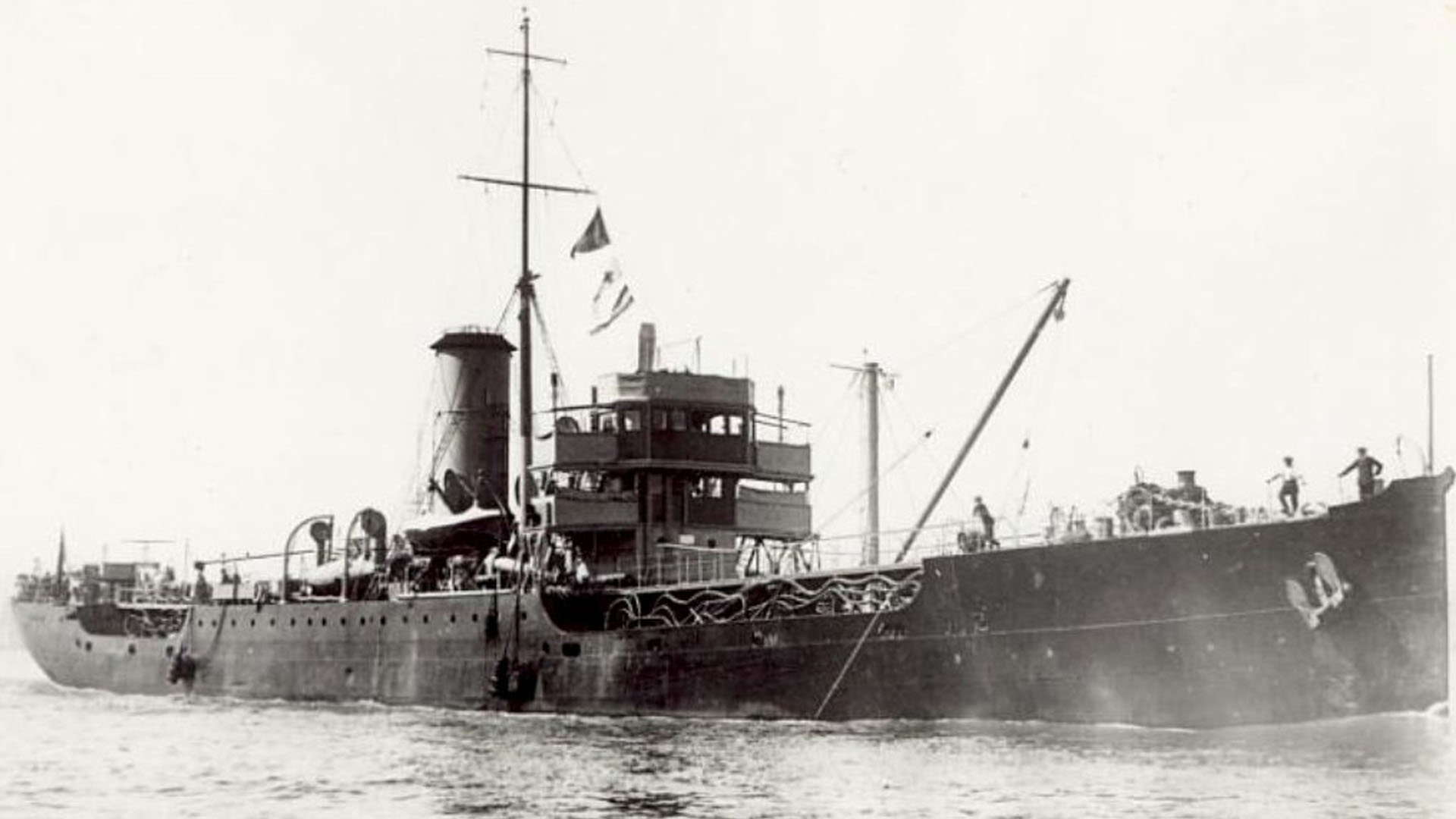On Tuesday 2nd January 1940, shells rained down on the coastal town of Bangor, Co. Down. The unexpected bombing was a result of shelling practise gone wrong on board the Royal Fleet Auxiliary ship Serbol.
Five dummy 4-inch shells struck buildings throughout the town after ricocheting off the water. Practise shells have no detonators and so do not explode but they caused considerable damage to the properties on impact. Several people in the town had lucky escapes as shells fell on the town from the guns of the Serbol in the mouth of Belfast Lough.
Shandon Park East
At 28 Shandon Park East, a bomb struck the house of Mr. W. Fitzsimmons. His 16-year-old daughter Belle Fitzsimmons and a friend Dorothy Gault were on the couch in the sitting room when the house came under attack. A shell came through the front wall close to the main door, passed through the hall, and knocked a large hole in the dining room wall. A writer in the Derry Journal described the hole as large enough for a donkey and cart to pass through.
It then passed by the couch, causing it to swing into the centre of the room. Both girls found themselves dazed on the floor, thrown from the couch. The couch jammed the door of the room shut meaning the girls had to escape by the window. Neither Belle nor her friend Dorothy sustained any injuries and both attended a party later that night. Mrs. Fitzsimmons was also home at the time in another room with her son Jim Fitzsimmons and nephew Jim Calvert. She assumed at the time, the damage and noise was the result of a gas explosion.
Seacliffe Road
At 102 Seacliffe Road, a shell wrecked the home of Harry Donaghy. He was a well-known resident of the town who sold boots in his shop in North Street, Belfast. He told a reporter from the Derry Journal that his house looked like an earthquake had hit. A shell entered the front of the house between the ground floor and upper floor, destroying pine beams before lodging in a brick wall. Part of this wall collapsed due to the impact. The shell passed through the drawing-room and living room, covering furniture and carpets with debris.
Donaghy was not home at the time, having taken the afternoon train to Belfast. His maid was also out for the afternoon on an errand and she returned to find the fire brigade in attendance. They stood by while naval officers and local police inspected the property.
Further along at 108 Seacliffe Road, the house of Mr. and Mrs. James McQuoid also suffered damage. The shell tore away part of the roof and gable wall causing masonry to fall into the back garden close to where McQuoid’s maid Mrs. Houston from Groomsport, Co. Down was working. McQuoid was in the dining room, sitting by the fire at the time.
Hazeldene Park and High Street
A fourth 4-inch shell struck the gable of the house belonging to Mr. J Holland at 8 Hazeldene Park. It crashed through the roof before landing in the garden. Ms. Holland worked as an official at Parliament Buildings, Stormont, Belfast. Mrs. Wimpress of 7 Hazeldene Park, Bangor, Co. Down described the damage to reporters. She suggested a young child had been in a pram in the garden of the house next door but had been moved just before the incident.
On High Street, Bangor, Co. Down, the garage belonging to Mr. S.C. Taylor was the only commercial property to sustain damage. A dummy shell crashed through the roof and landed in a garden to the rear of the building. Motor parts and accessories sustained damage on the property.
Aftermath of the Bombing
After the bombing of Bangor, a state of alarm fell on the town. Residents did not know what was happening as a thick fog obscured the view across Belfast Lough. Locals heard gunfire from around 1530hrs on 2nd January 1940 but could not determine the source.
Naval officers rushed to the town on hearing the news and helped to remove the shells from damaged properties. Reports suggest the adverse weather conditions were to blame for the crew firing towards the town.
News of the Serbol’s accidental bombing of Bangor, Co. Down made headlines in the Belfast Telegraph, the Northern Whig and Belfast Post, the Derry Journal and the Daily Record on Wednesday 3rd January 1940, the Ballymena Observer on Friday 5th January 1940, and the Larne Times on Saturday 6th January 1940.
After the Royal Fleet Auxiliary’s accidental bombing, assessors from the Northern Ireland Ministry of Finance visited the properties in Bangor, Co. Down. Working with the Admiralty, they assessed the damage caused and confirmed that the cost of repair work would not fall on ratepayers. Meanwhile, hundreds of curious sightseers flocked to the town to see the impact of the accident causing the local council to erect protective screens around some properties.
